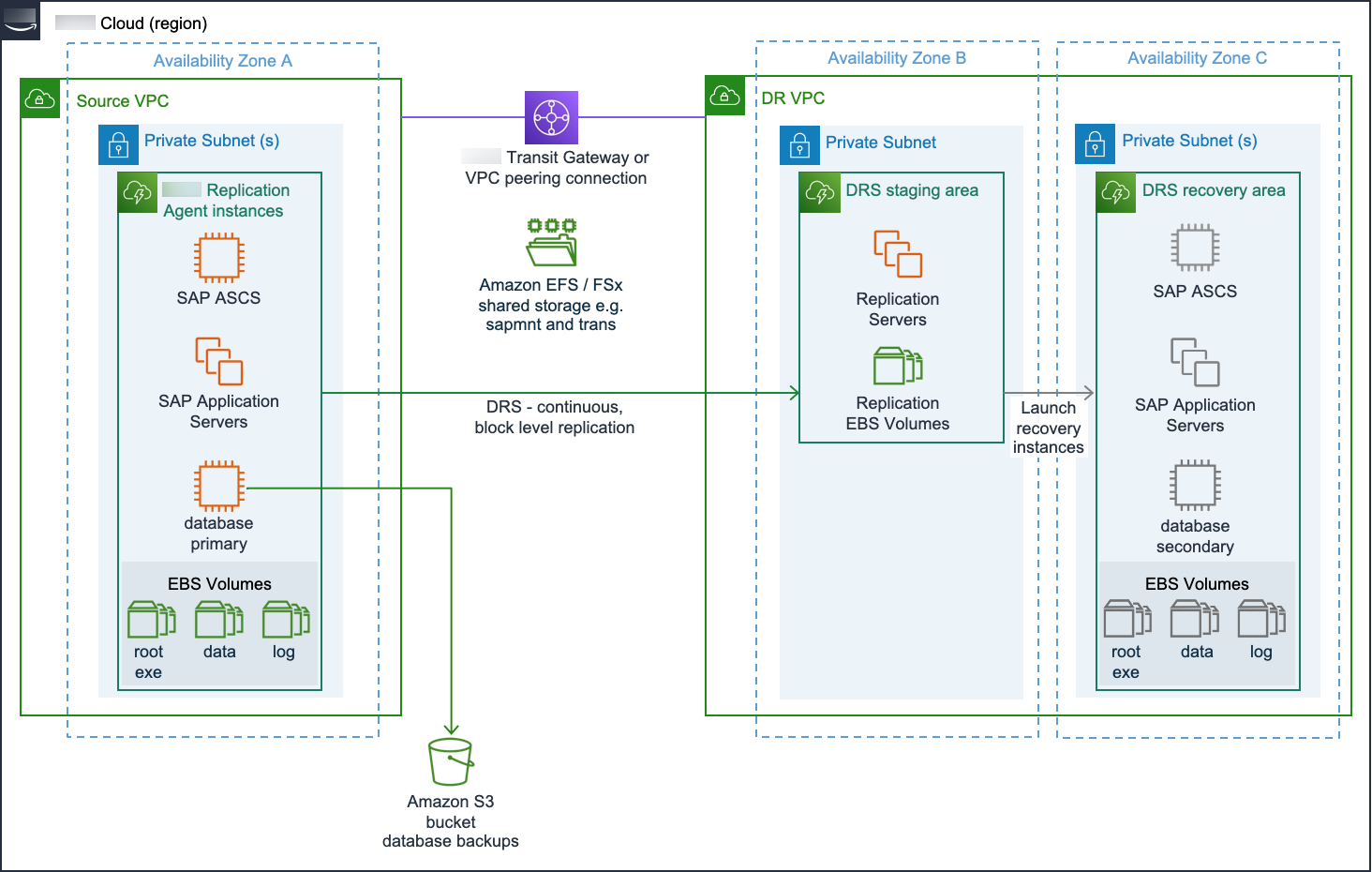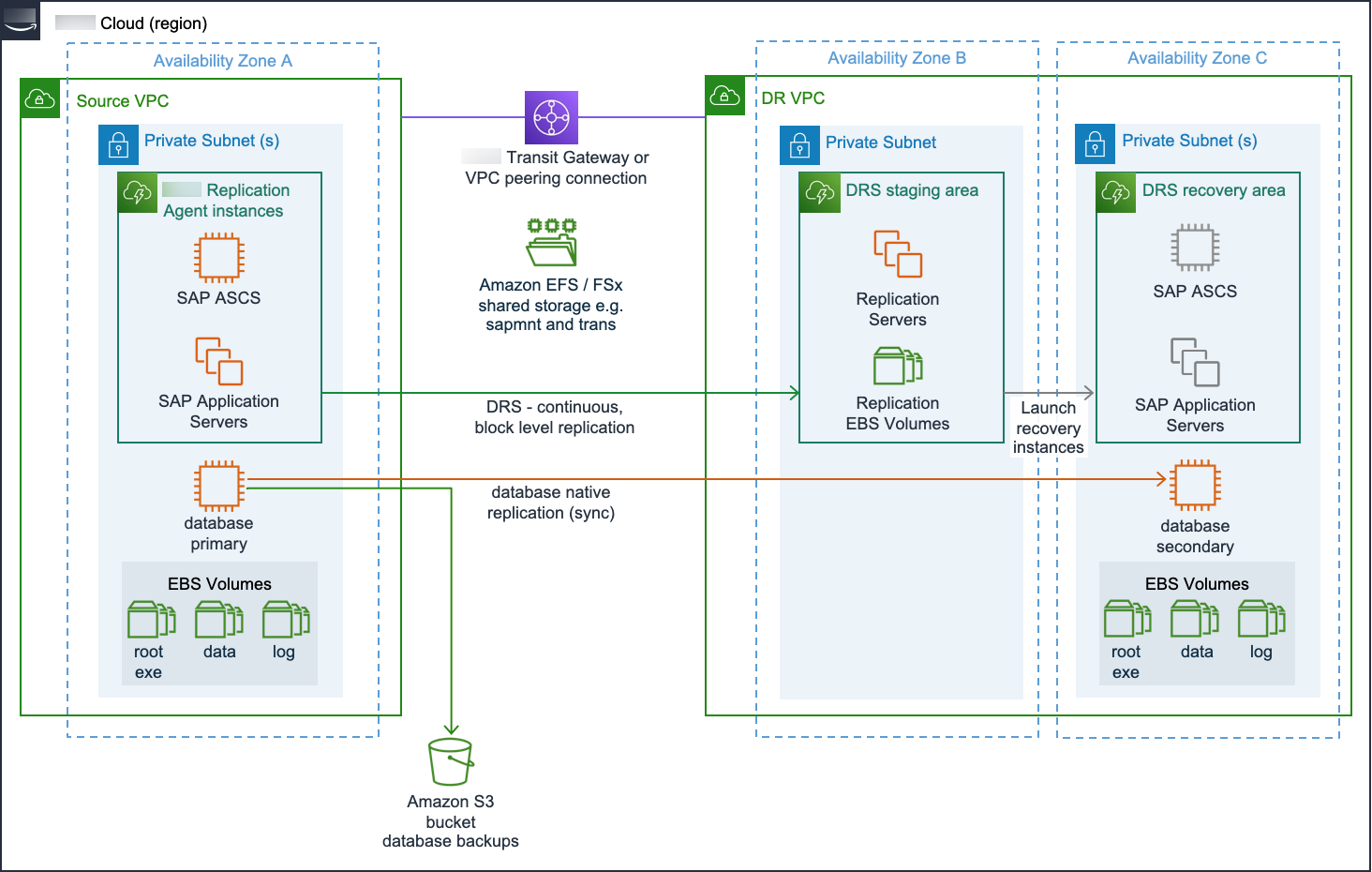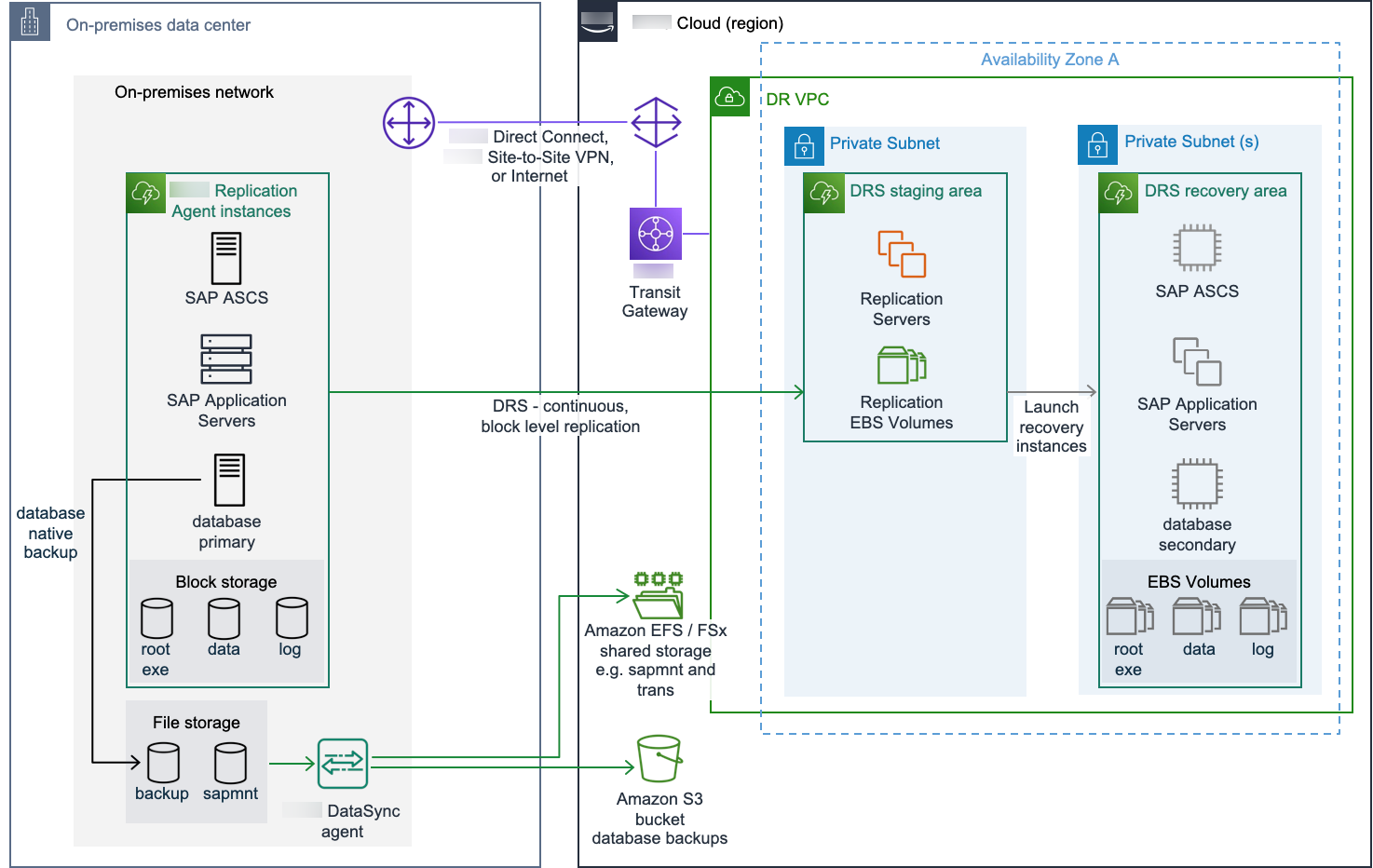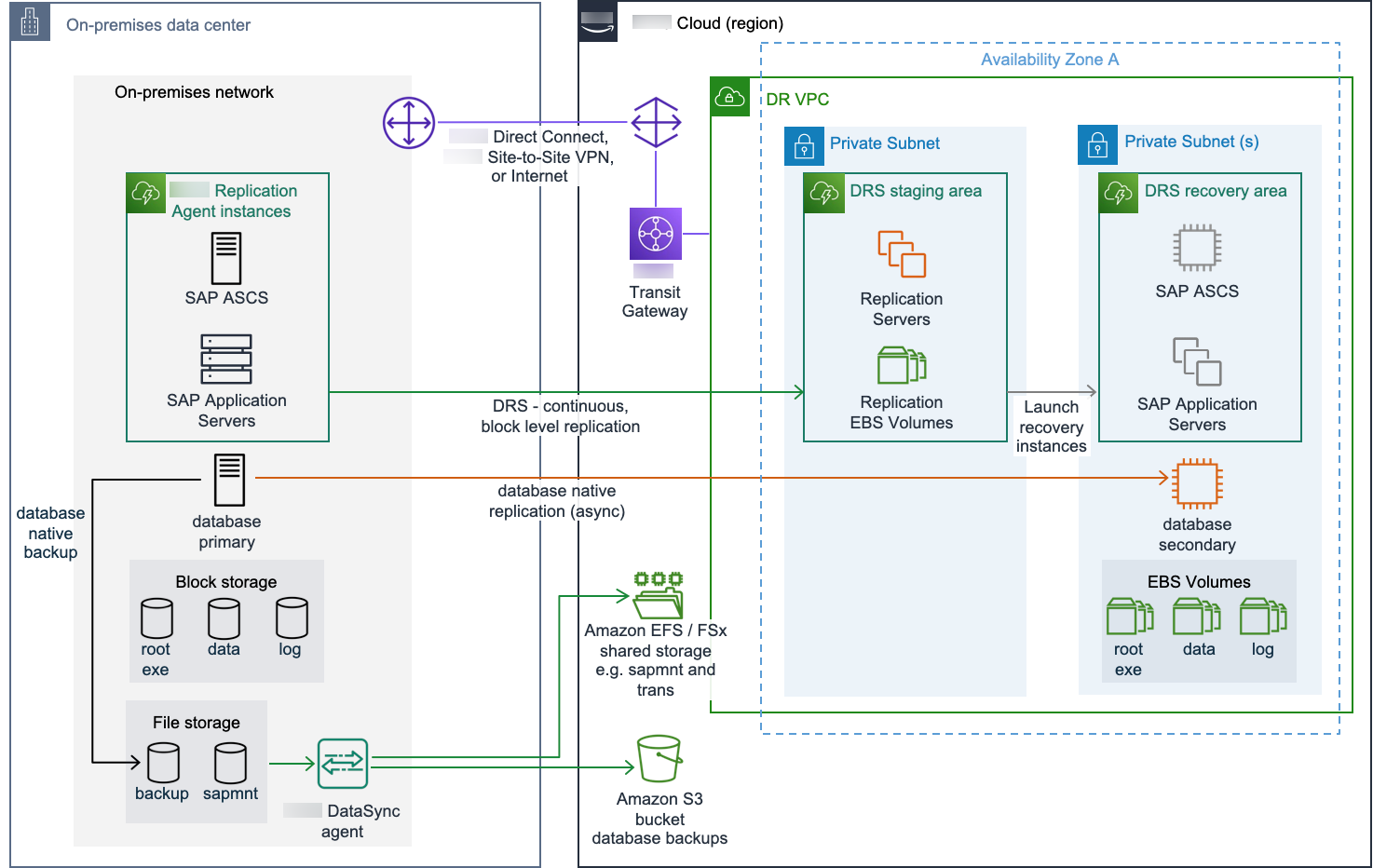Disaster recovery scenarios
The following are the three disaster recovery scenarios.
Topics
Amazon In-Region disaster recovery
In Amazon cloud, Availability Zones are separated by a meaningful distance, within 100 km (60 miles away from each other). This distance provides isolation from the most common disasters that could affect data centers, for instance, floods, fire, severe storms, earthquakes, etc. It is used by many Amazon customers today to support their resiliency requirements for SAP workloads. Based on your business continuity requirements, in-Region disaster recovery maybe suitable for you. For more information, see Single Region architecture patterns.
Best practices
-
Separate Amazon VPCs for the source and recovery areas in the same Region
-
Separate Amazon accounts for source and recovery areas
-
Amazon Transit Gateway or Amazon VPC peering for supporting replication traffic and end user connectivity
For more information, see Network.
-
Multiple Availability Zones resiliency of Amazon S3 buckets and Amazon EFS for data protection
-
Separate Availability Zones for source, staging, and recovery areas
The following two sections cover the reference architectures for this scenario.
Full in-Region disaster recovery implementation

In full in-Region disaster recovery implementation, the source servers running SAP application components, such as central services instance ((A)SCS), primary application server (PAS), additional application server (AAS), and the database, are replicated using Elastic Disaster Recovery.
Hybrid in-Region disaster recovery implementation

In hybrid in-Region disaster recovery implementation, the source servers running SAP application components, such as central services instance [(A)SCS], primary application server (PAS), and additional application server (AAS) are replicated using Elastic Disaster Recovery. The database is replicated using a database native replication method.
Amazon Cross-Region disaster recovery
A disaster recovery scenario with multiple Amazon Regions enables business continuity with your data storage in two separate geographical locations. For more information, see Multi-Region architecture patterns.
Best practices
-
Separate Amazon VPCs for the source and recovery areas different Regions
-
A shared Amazon account for source and recovery areas
-
Amazon Transit Gateway or Amazon VPC peering for supporting replication traffic and end user connectivity
For more information, see Network.
-
Replication via Amazon EFS or other file systems to protect shared storage between Regions
For more information, see Amazon Cross-Region disaster recovery.
Note
You can only replicate in the same Amazon account with Amazon EFS.
-
Amazon S3 cross-Region replication to provide a copy of your database backups and other Amazon S3 bucket data to disaster recovery Amazon VPC
-
Separate subnets for the source, staging, and recovery areas
The following two sections cover the reference architectures for this scenario.
Full cross-Region disaster recovery implementation

In full cross-Region disaster recovery implementation, the source servers running SAP application components, such as central services instance ((A)SCS), primary application server (PAS), additional application server (AAS), and the database, are replicated using Elastic Disaster Recovery.
Hybrid cross-Region disaster recovery implementation

In hybrid cross-Region disaster recovery implementation, the source servers running SAP application components, such as central services instance [(A)SCS], primary application server (PAS), and additional application server (AAS) are replicated using Elastic Disaster Recovery. The database is replicated using a database native replication method.
Outside of Amazon to Amazon disaster recovery
In this scenario, the source systems are running in a non-Amazon environment. A hybrid disaster recovery solution like this is can be implemented to quickly add resiliency to your existing production environments on other platforms.
Best practices
-
Amazon Direct Connect for supporting replication traffic and end user connectivity
For more information, see Network.
-
Amazon DataSync to protect shared storage
For more information, see Outside of Amazon to Amazon disaster recovery.
-
Separate subnets for the staging and recovery areas
The following two sections cover the reference architectures for this scenario.
Full non-Amazon to Amazon disaster recovery implementation

In full non-Amazon to Amazon disaster recovery implementation, the source servers running SAP application components, such as central services instance ((A)SCS), primary application server (PAS), additional application server (AAS), and the database, are replicated using Elastic Disaster Recovery.
Hybrid non-Amazon to Amazon disaster recovery implementation

In hybrid non-Amazon to Amazon disaster recovery implementation, the source servers running SAP application components, such as central services instance [(A)SCS], primary application server (PAS), and additional application server (AAS) are replicated using Elastic Disaster Recovery. The database is replicated using a database native replication method.
For more disaster recovery options and information, you can reach out to Amazon Support